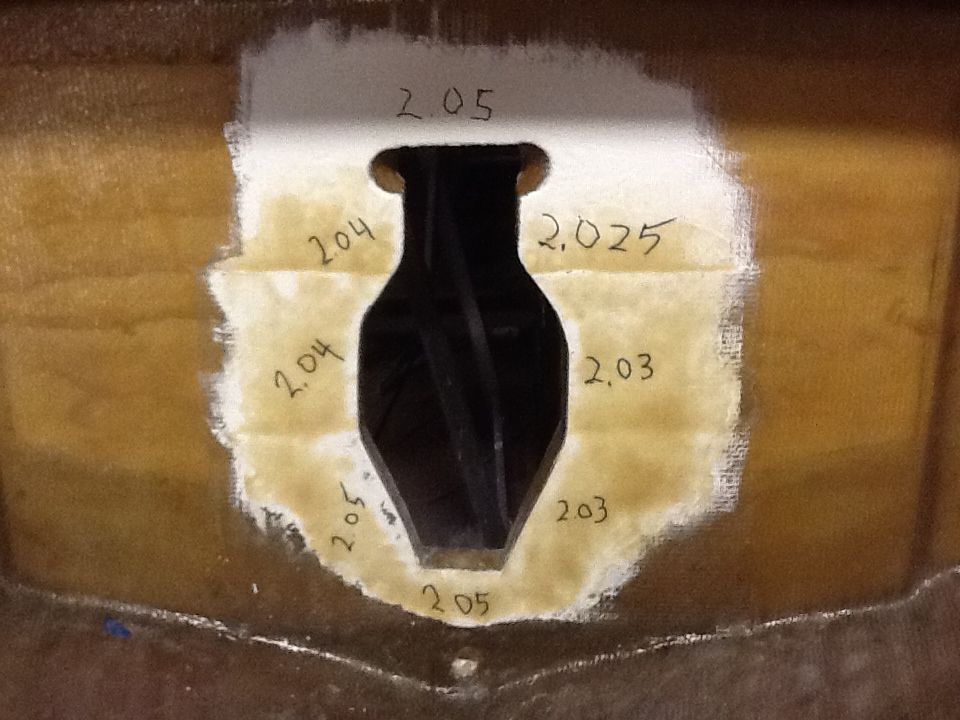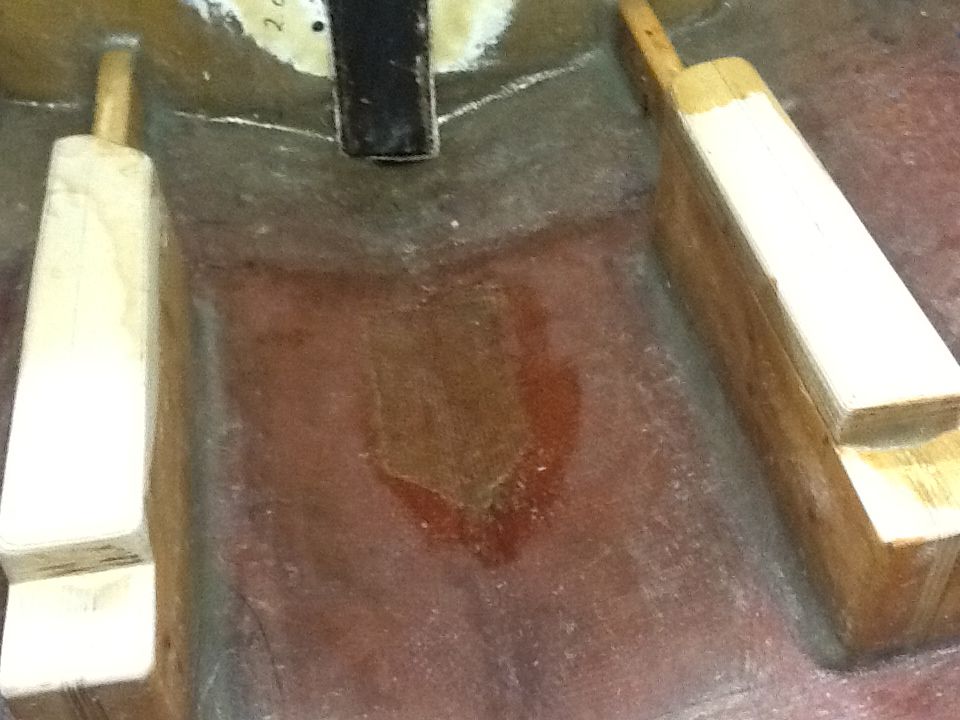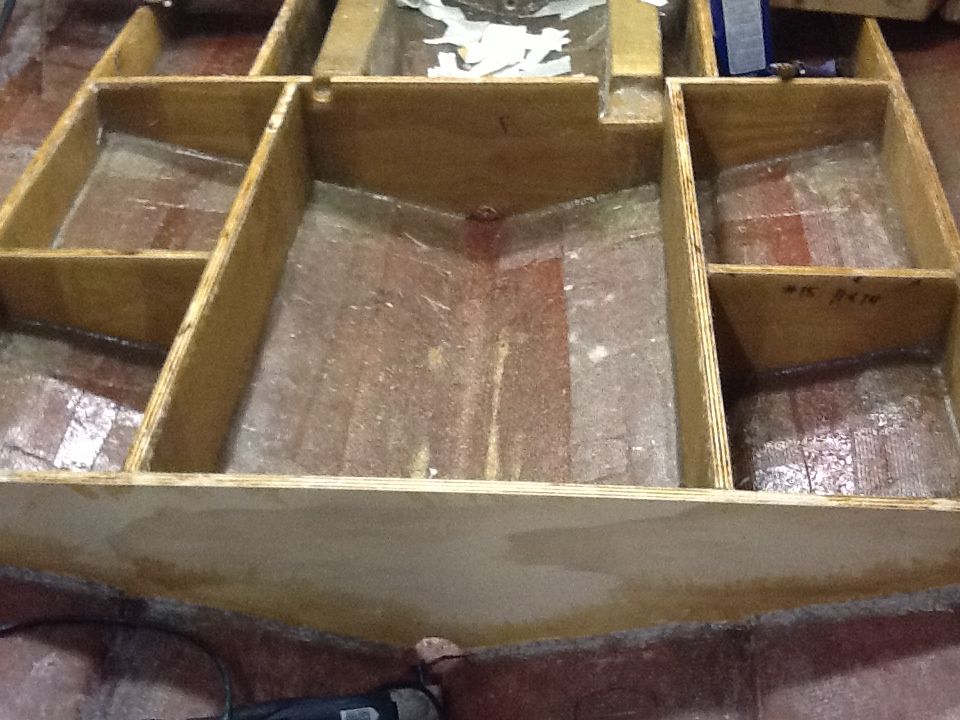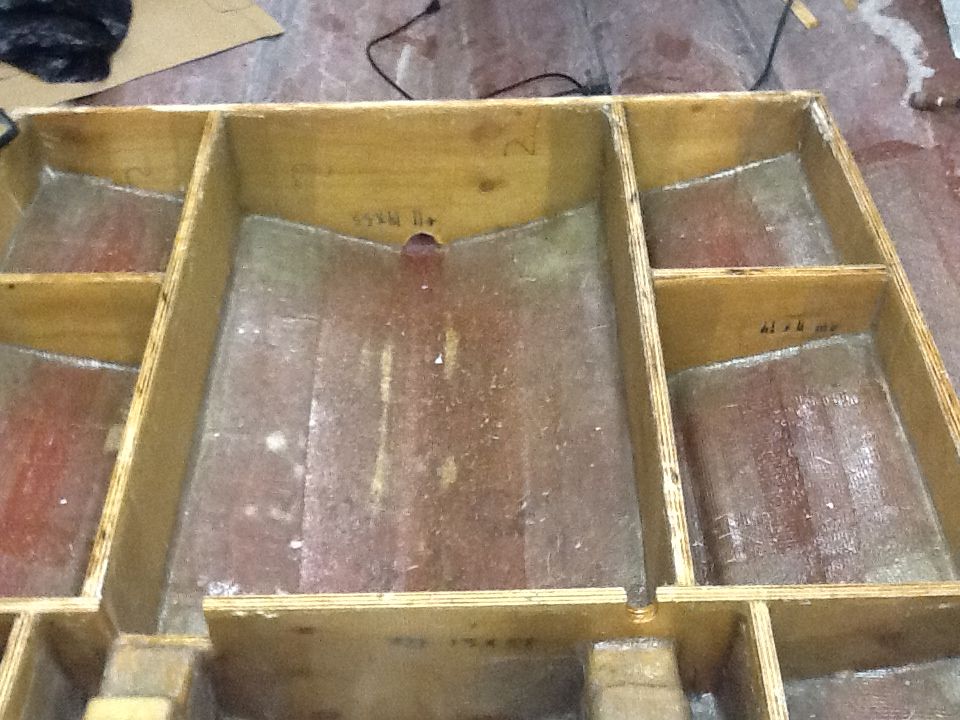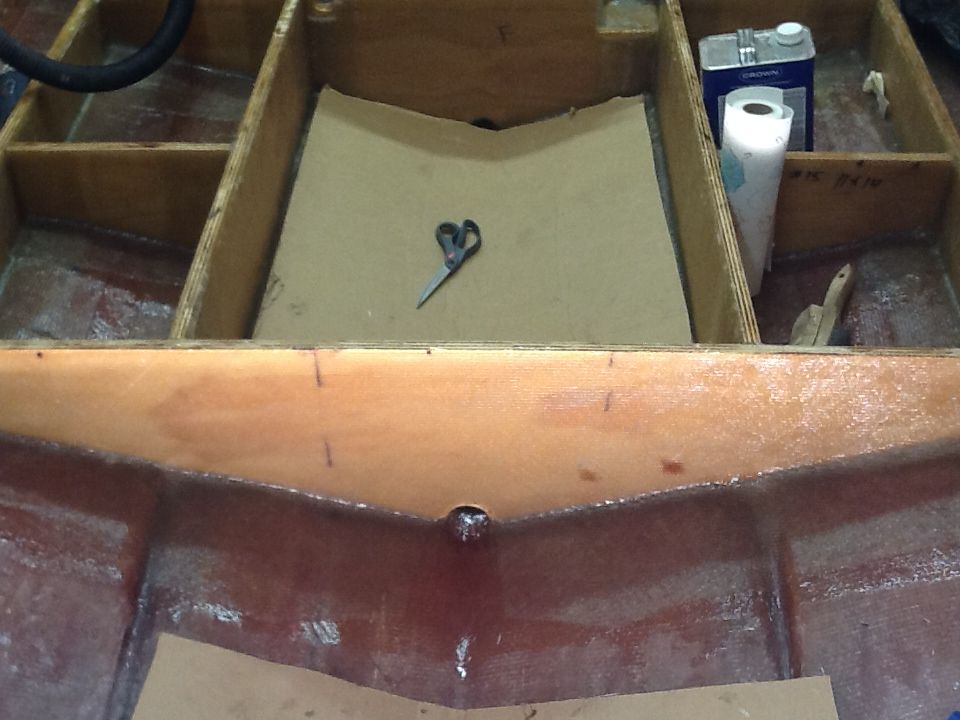I recently noticed someone on the forum solved the transom flatness issue with a piece of ply, some PB (I think), plastic and clamps. Wish I'd thought of that or better yet wish he'd posted sooner! On a similar note (wish they'd posted sooner) someone made their own fiberglass tubes (to line drain holes, PVC is usually used). I used a sample pack of fiberglass tubes I got from an antenna mfg shown below (about $15). Since my boats main failure was at the bulkhead drain holes I wanted the best waterproof fix I could think of.
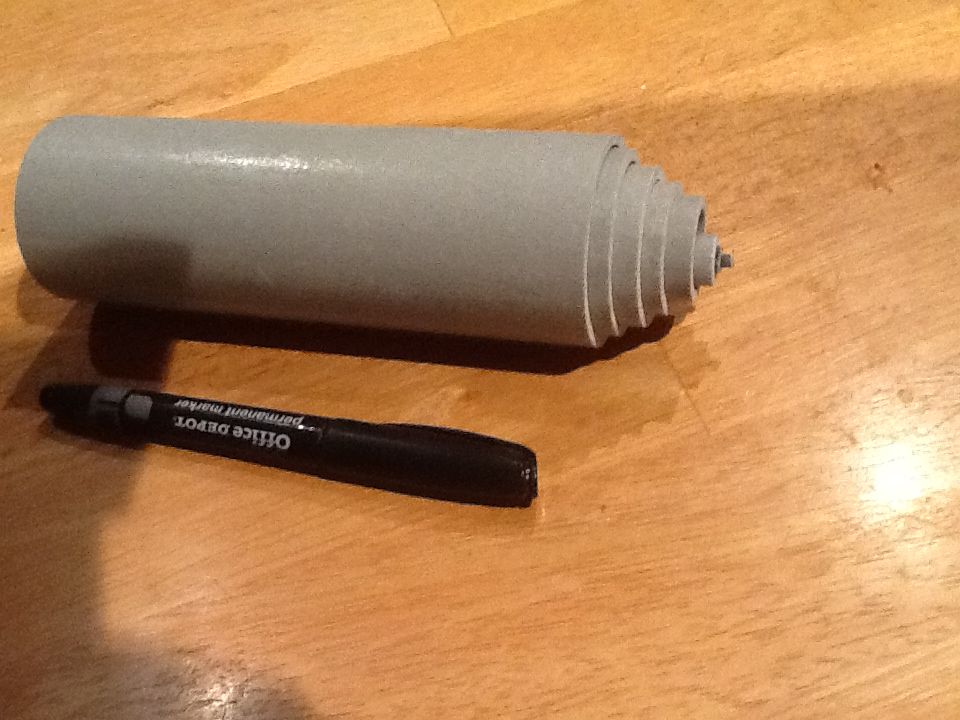
Haven't updated lately cause I been working my butt off on this! Here is where it stands now.
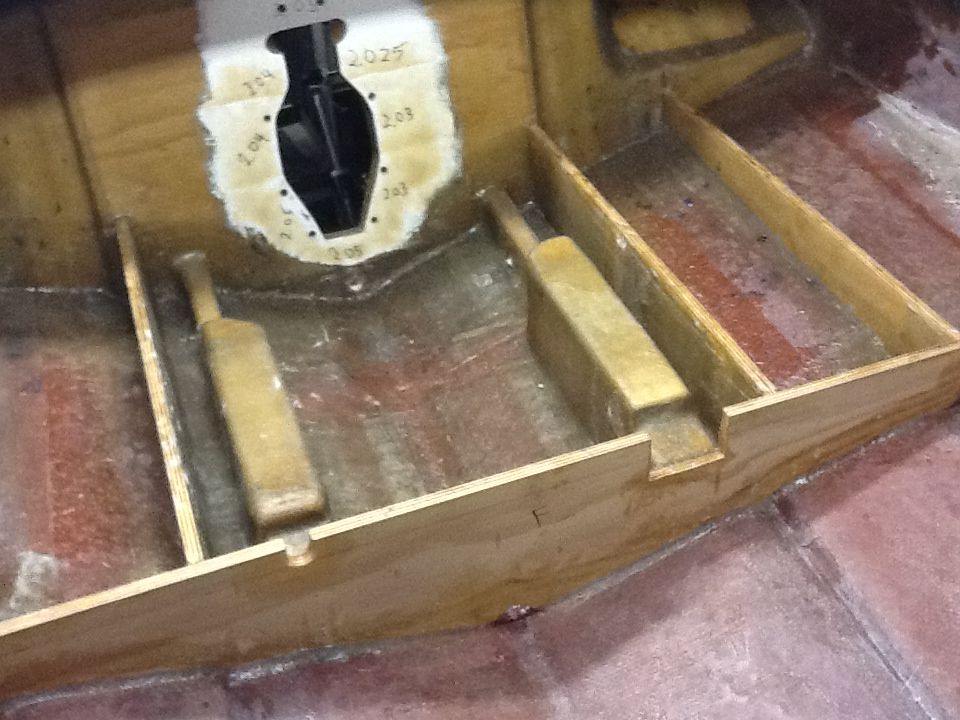
Well, it looks prettier in the picture than in real life! Biggest problem was getting 1708 around the corners on top of the engine supports without air pockets. Second problem was glassing over the motor mount, down to the hull then up the side of the stringer. The space between stringer and mount is less than 3 inches. Get one corner air free, start on the other corner and it starts pulling the first corner. I tried several ways of holding the first side down; the chip brush on one side and the roller on the other worked pretty good. Getting 4 layers of 1708 over everything was a glassing challenge I'm not sure I was up to. I think if I had to do it over again I'd glass in the mounts first and then add the inner stringers. All in all it seems solid back there, few air bubbles, plenty of tabbing in the corners so I'm calling it a win but casualties were worse than anticipated!
I've pretty much decided the way I'll get my stringer height, and the way I did this area, is to start with the bulkhead and PB in place, use a string line to mark height and use a straight edge to cut the bulkhead nice and flat with nothing in the way of the saw. For the stringers one end is marked where it meets at the top of the bulkhead and on the other end use the string line to figure height and mark that. Draw a line and cut the stringer just a little short. Use my shims to raise it to proper height and PB it in. A little unorthodox I know, probably inefficient but if I try to cut the stringers in place it won't be very pretty.
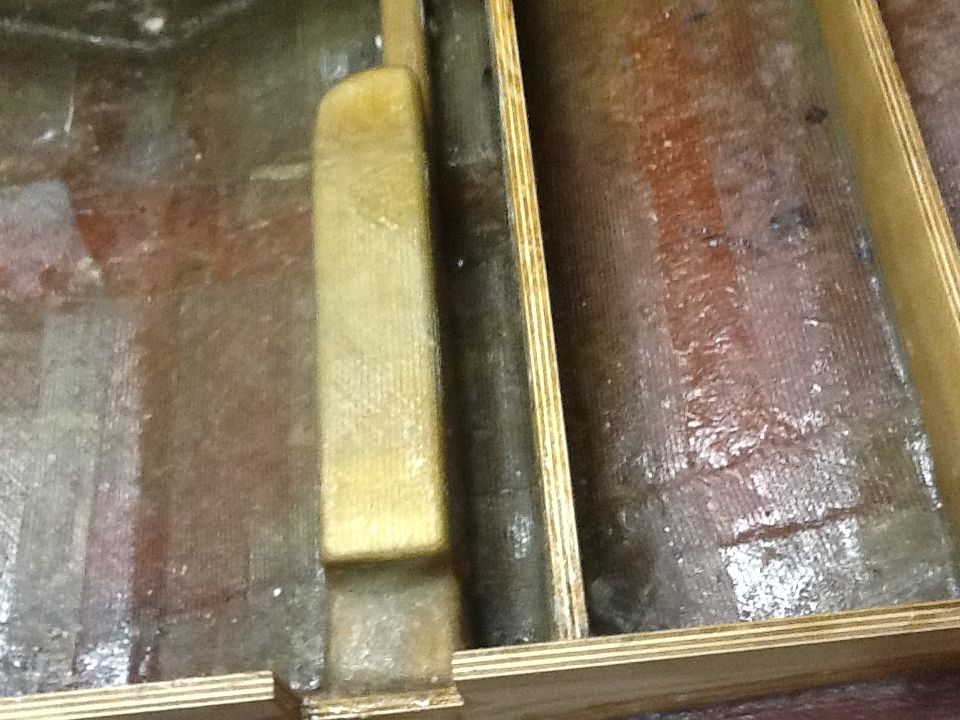
The distance between mount and stringer < 3".
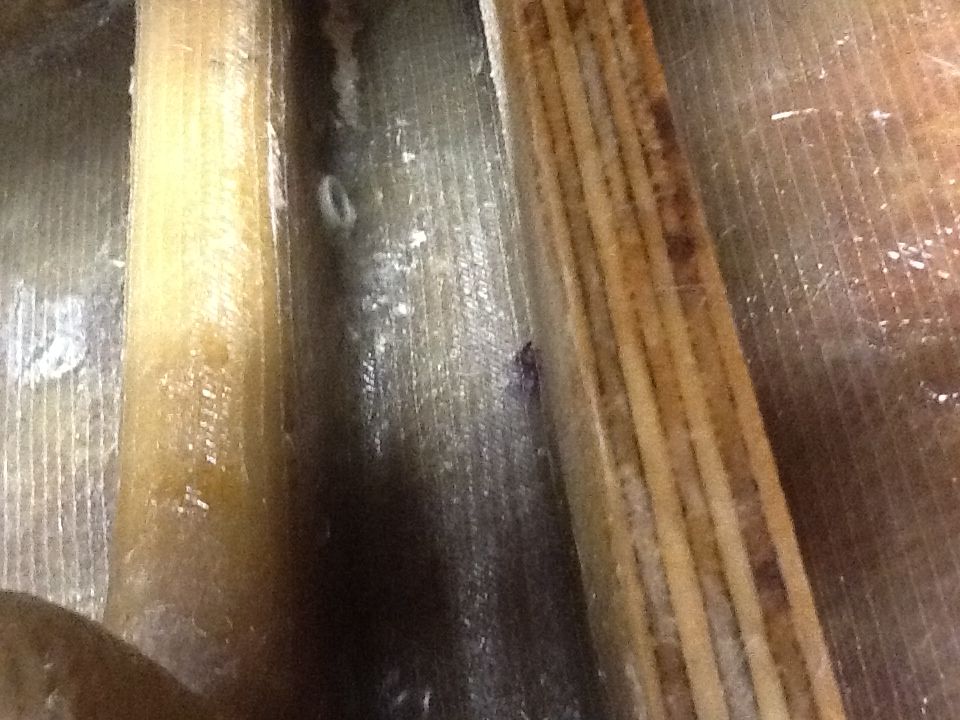
The drain tube in place.
Lots more I'd like to mention and a few questions but this is long enough so I quit for now.




















